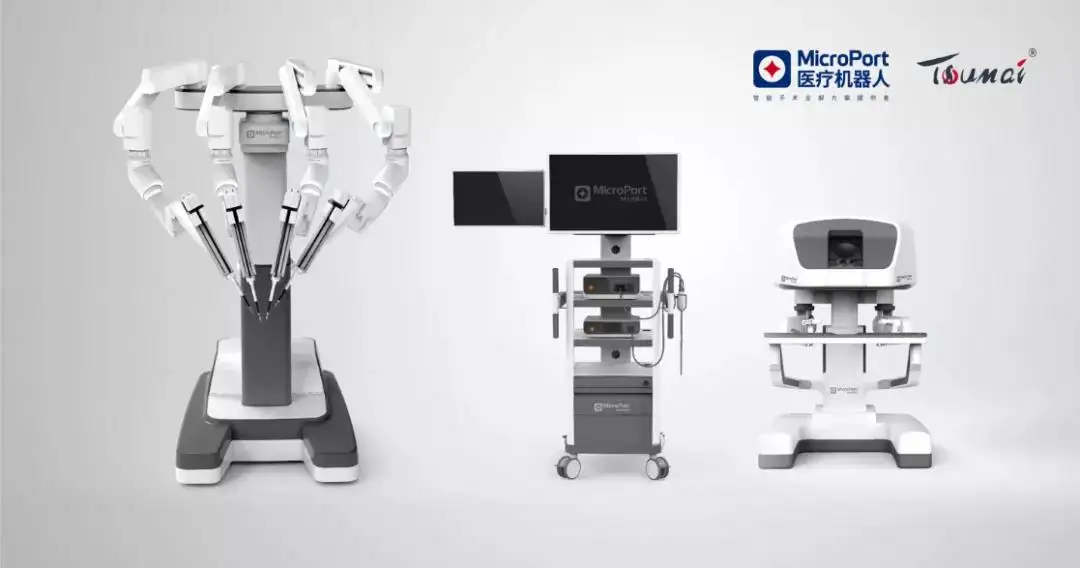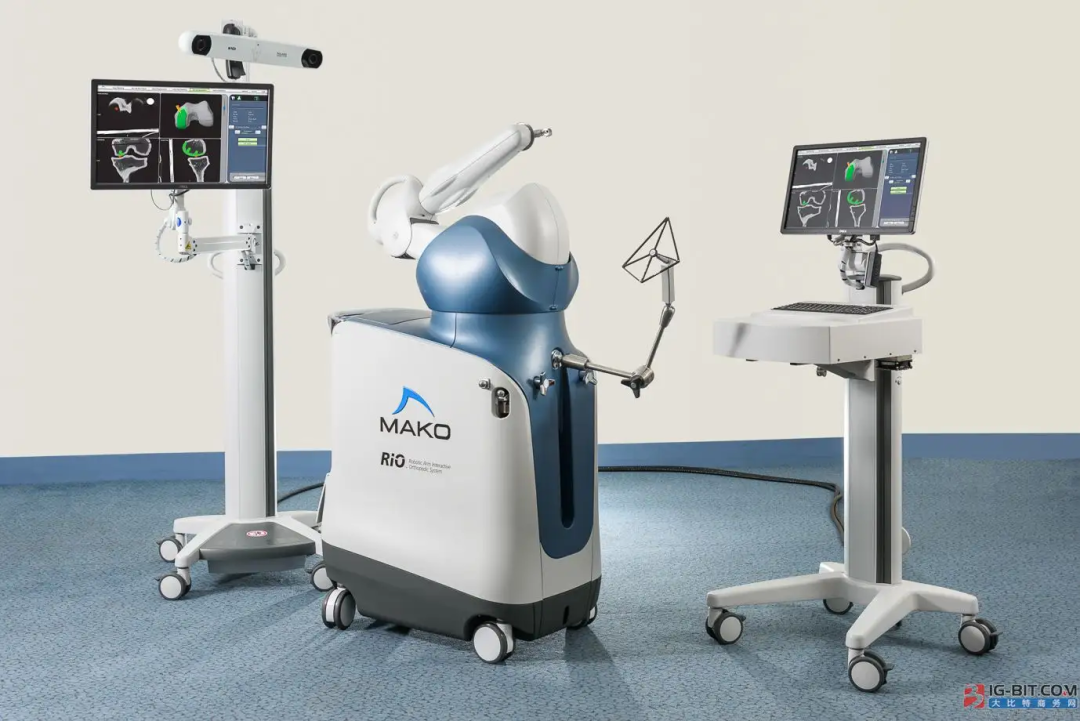 China Medical Procurement NetworkPublic Service Platform for Medical Device Procurement in China
China Medical Procurement NetworkPublic Service Platform for Medical Device Procurement in China

Surgical robots are precision medical devices that have emerged alongside the development of minimally invasive surgery and related foundational technologies. They are used in confined surgical areas to perform precise surgical operations beyond human capabilities. With advantages such as minimal trauma, high precision, reduced learning curves for doctors, and standardized surgical operations, surgical robots are not only an important innovation to alleviate the current shortage of medical resources but also a new track pursued by capital in recent years.
–01–
The Surgical Robot Sector is Booming
1. Policies Promote the Development of Surgical Robots
In recent years, surgical robots have received significant attention from various levels of government and have been a focus of national industrial policy support. The government has introduced several policies encouraging the development and innovation of high-end medical devices such as surgical robots. For example, the “14th Five-Year Plan for the Development of the Medical Equipment Industry” explicitly proposes tackling intelligent surgical robots and promoting the standardized application of surgical robots in the treatment of major diseases.
2. Market Size of Surgical Robots
The surgical robot market in China is still in its early development stage, with enormous growth potential. The market size of surgical robots in China grew from $129 million in 2016 to $425 million in 2020. It is expected to continue to grow in 2021, reaching $755 million. By 2022, the market size of surgical robots in China is projected to further reach $1.137 billion.

3. Structure of the Surgical Robot Industry
Currently, the surgical robot market can be subdivided into laparoscopic robots, orthopedic robots, percutaneous robots, vascular interventional surgical robots, oral surgical robots, and other surgical robots. Among these, laparoscopic robots account for the largest share of the surgical robot market in China, making up 74.9% of the overall market. This is followed by orthopedic robots (10%) and percutaneous robots (4.9%).
4. Summary of Domestic Surgical Robot Companies
Laparoscopic Surgical Robot Companies

Shanghai MicroPort Medical Robotics (Group) Co., Ltd.
Wuhan United Imaging Healthcare Co., Ltd.
Shenzhen Jingfeng Medical Technology Co., Ltd.
Suzhou Kando Robotics Co., Ltd.
Beijing Shurui Technology Co., Ltd.
Ruilong Nofu (Shanghai) Medical Technology Co., Ltd.
Harbin Sizerui Intelligent Medical Equipment Co., Ltd.
Chengdu Borns Medical Robotics Co., Ltd.
Agile Medical Technology (Suzhou) Co., Ltd.
Shenzhen Tianrui Medical Technology Co., Ltd.
Shenzhen Robor Medical Technology Co., Ltd.
Beijing Turing Minimally Invasive Medical Technology Co., Ltd.
Hangzhou Huajiang Medical Robotics Co., Ltd.
Qingdao Kezhixing Robotics Co., Ltd.
Orthopedic Surgical Robot Companies

Suzhou MicroPort Chuangxing Robotics Co., Ltd.
Beijing Tianzhihang Medical Technology Co., Ltd.
Shandong Weigao Surgical Robot Co., Ltd.
Shenzhen Xinjunte Intelligent Medical Device Co., Ltd.
Huake Precision (Beijing) Medical Technology Co., Ltd.
Beijing Rosenbot Technology Co., Ltd.
Beijing Changmugu Medical Technology Co., Ltd.
Shenzhen Liuyedao Robotics Co., Ltd.
Hangzhou Santan Medical Technology Co., Ltd.
Hangzhou Jianjia Robotics Co., Ltd.
Zhongsci Zhibo (Zhuhai) Technology Co., Ltd.
Suzhou Zhuzheng Robotics Co., Ltd.
Yuanhua Intelligent Technology (Shenzhen) Co., Ltd.
Beijing Ge Rui Technology Co., Ltd.
Nanjing Pua Medical Equipment Co., Ltd.
Shanghai Jiaao Information Technology Development Co., Ltd.
Shanghai Longhui Medical Technology Co., Ltd.
Vascular Interventional Robot Companies

Shanghai Aopeng Medical Technology Co., Ltd.
Beijing Weimai Medical Equipment Co., Ltd.
Shenzhen Aibo Medical Robotics Co., Ltd.
Weiya Medical Technology (Suzhou) Co., Ltd.
Suzhou Runmaide Medical Technology Co., Ltd.
Shuzhidao Medical Technology (Suzhou) Co., Ltd.
Percutaneous Surgical Robot Companies

Yiruan Information Technology (Shanghai) Co., Ltd.
Shanghai Jingmou Medical Technology Co., Ltd.
Shenzhen Zhenshi Medical Equipment Co., Ltd.
Pangkece (Shanghai) Intelligent Medical Technology Co., Ltd.
Other Surgical Robot Companies

Beijing Baihui Weikang Technology Co., Ltd.
Beijing Xixiang Technology Co., Ltd.
Shaoxing Mayo Heart Magnetic Medical Technology Co., Ltd.
Shenzhen Nuobo Medical Technology Co., Ltd.
Gaorong Technology (Shanghai) Co., Ltd.
Shanghai Ruichu Technology Co., Ltd.
Shanghai Langhe Medical Devices Co., Ltd.
Shanghai Fudan Digital Medical Technology Co., Ltd.
Changzhou Jinse Medical Information Technology Co., Ltd.
Miaozhi Technology (Shenzhen) Co., Ltd.
Rehabilitation Robot Companies

Shanghai Zhuodao Medical Technology Co., Ltd.
Guangdong Mingkai Medical Robotics Co., Ltd.
Hainan Keweda Rehabilitation Medical Devices Co., Ltd.
Shenyang Siasun Robot Automation Co., Ltd.
Shanghai Fourier Intelligent Technology Co., Ltd.
Harbin Tianyu Rehabilitation Medical Robot Co., Ltd.
Buffalo Robotics Technology (Chengdu) Co., Ltd.
Shenzhen Yinghansi Power Technology Co., Ltd.
Niu Ren Intelligent Technology (Hangzhou) Co., Ltd.
Beijing Daai Robot Technology Co., Ltd.
Shenzhen Maibu Robot Technology Co., Ltd.
Maibao Intelligent Technology (Suzhou) Co., Ltd.
Shenzhen Qino Power Technology Co., Ltd.
Hangzhou Chengtian Technology Development Co., Ltd.
–02–
The Surgical Robot Industry Welcomes New Development Opportunities
1. High Demand for Laparoscopic Surgical Robots
Laparoscopic surgical robots are designed to perform various complex minimally invasive surgeries. They typically include a surgeon’s control console, a patient-side surgical cart, and an imaging system; additionally, the patient-side surgical cart encompasses robotic arms that hold laparoscopes and accompanying surgical instruments. The laparoscope extends the surgeon’s view into the patient’s body, while the robotic arms simulate their hands, holding and maneuvering the laparoscope and surgical instruments.
According to Frost & Sullivan’s forecast, the number of robot-assisted laparoscopic surgeries in China will approach 681,000 by 2026, with a CAGR of 55.9% from 2020 to 2026. In 2021, there were 284 laparoscopic surgical robots in China; this number is expected to rise to 2,050 by 2026, with a CAGR of 48.8%.

2. Significant Potential in the Vascular Interventional Surgical Robot Market
In recent years, the number of patients with vascular diseases in China has been increasing, from 7.08 million in 2017 to 8.14 million in 2021, and it is expected to reach 9.2 million by 2025.
Vascular interventional surgical robots primarily assist in catheter advancement and navigation during vascular interventional surgeries, constructing three-dimensional models of the patient’s vascular structure based on preoperative and intraoperative imaging data, and analyzing the characteristics of vascular junctions, bends, elasticity, and plaques, thereby enabling tracking and positioning of surgical instruments during procedures. The market for vascular interventional surgical robots in China is expected to reach 34 million yuan in 2022, further increasing to 5.824 billion yuan by 2030, with a CAGR of 90.3% from 2022 to 2030.
3. Orthopedic Surgical Robots
Orthopedic surgical robots assist in orthopedic surgeries, providing benefits such as precision, customized three-dimensional preoperative plans, clearer surgical sites, reduced tremors, and improved surgical accuracy. Additionally, the use of orthopedic surgical robots helps minimize damage to healthy bones and tissues, reduce blood loss, shorten hospital stays, and accelerate recovery.
Orthopedic surgical robots are mainly applied in three types of surgeries: joint replacement surgeries, spinal surgeries, and orthopedic trauma surgeries. Among these, robot-assisted joint replacement surgeries are the most widely used and complex. According to Frost & Sullivan, the global market size for joint replacement surgical robots was $725 million in 2020, accounting for approximately 52% of the global orthopedic surgical robot market.
As high-end medical devices, surgical robots inevitably face challenges such as high initial R&D investment and lengthy approval processes for market sales, significantly increasing the uncertainty of profitability for companies. The precise and safe value provided by surgical robots in clinical settings is evident; however, the high prices of surgical robot products must be reduced to a level that is generally acceptable in the market to enhance penetration rates and achieve large-scale commercialization.
Currently, the speed at which surgical robots are entering medical insurance is accelerating. With the national push for medical service price reform and support for clinically valuable innovative products, surgical robots will be subject to centralized procurement, and the speed of obtaining medical insurance payments will increase. The inclusion of surgical robots in medical insurance serves as a policy support signal that will further open up new prospects for the domestic surgical robot market.
